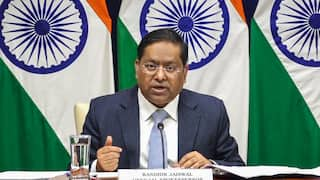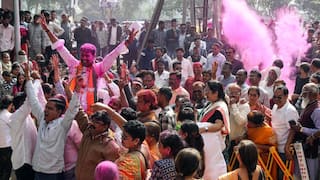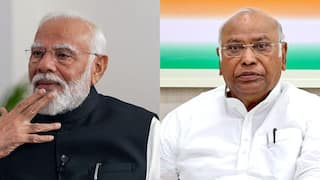Delhi's Suspected Monkeypox Patient Discharged From LNJP Hospital After Testing Negative
The man who hailed from Uttar Pradesh's Ghaziabad, in his 30s, has been diagnosed with chickenpox, said a senior doctor.

New Delhi: A Suspected monkeypox patient in the national capital Delhi was discharged after testing negative in LNJP Hospital on Thursday, said a senior doctor as reported by news agency PTI. The man who hailed from Uttar Pradesh's Ghaziabad, in his 30s, has been diagnosed with chickenpox, he said. He was admitted to a designated centre for monkeypox in the Delhi government-run hospital on Tuesday and had fever and skin lesions.
"The suspected case of monkeypox was brought to LNJP Hospital two days ago. He was discharged today after his reports came back negative," LNJP Medical Director Suresh Kumar told PTI.
The samples from the first reported case of monkeypox, who is currently in hospital, have been taken and sent to the National Institute of Virology of Pune, said Kumar.
"His vital parameters are normal and lesion condition is improving," he added.
Four monkeypox cases have been reported so far in the country, including three from Kerala.
Also Read: EXPLAINED: Is Monkeypox A Sexually Transmitted Disease? Know What Experts Say
Earlier, Dr. Poonam Khetrapal Singh, Regional Director, WHO South-East Asia Region, said that “monkeypox has been spreading rapidly and to many countries that have not seen it before, which is a matter of great concern”. She added that with cases concentrated among men who have sex with men, it is possible to curtail further spread of the disease with focused efforts among at-risk populations.
WHO Director-General Tedros Adhanom Ghebreyesus said in a media briefing last week that for the moment, monkeypox is an “outbreak that is concentrated among men who have sex with men”.
The World Health Organization (WHO) declared monkeypox a global public health emergency of international concern on July 23.
Monkeypox virus is transmitted from infected animals to humans via indirect or direct contact. Human-to-human transmission can occur through direct contact with infectious skin or lesions, including face-to-face, skin-to-skin, and respiratory droplets.
(With PTI inputs)






































